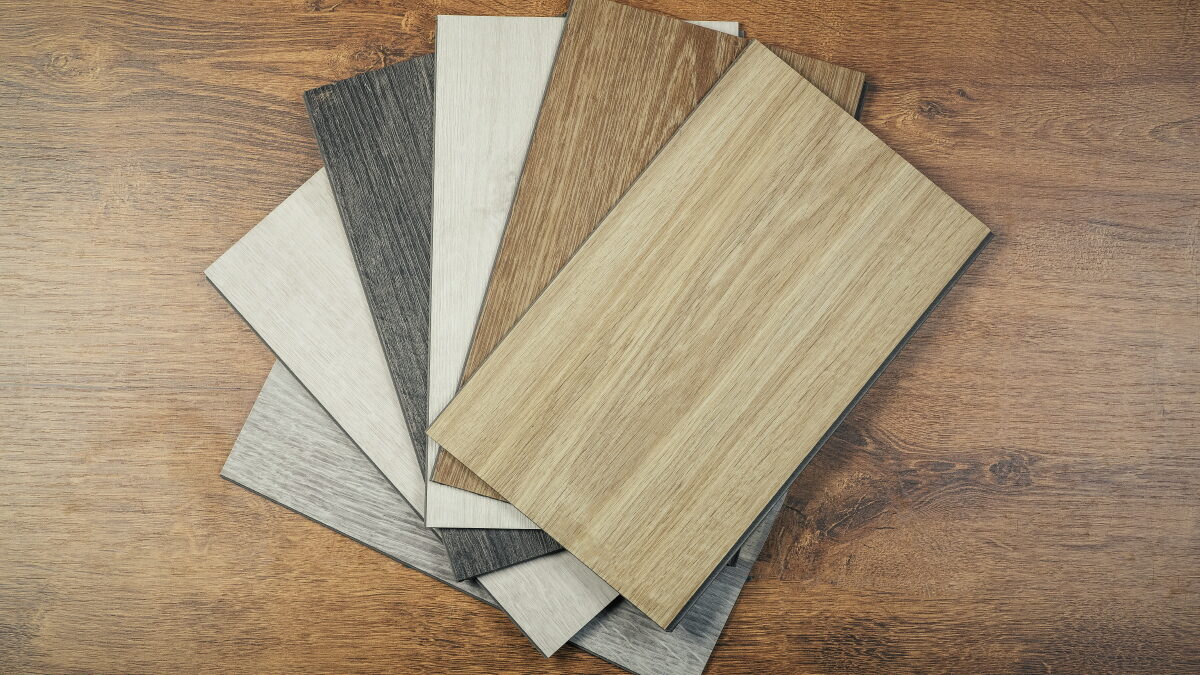The flooring you choose for your space can have a significant impact on the aesthetics and functionality of your home. That is why both homeowners and business owners are turning to Luxury Vinyl Plank (LVP). Its versatility, durability, and visual appeal have made it a sought-after flooring option. In this comprehensive guide, we’ll give you an in depth look at what LVP is, how it differs from other vinyl flooring products, and break down both its comparative advantages and potential drawbacks to help you make an informed decision when deciding if LVP is right for your home.
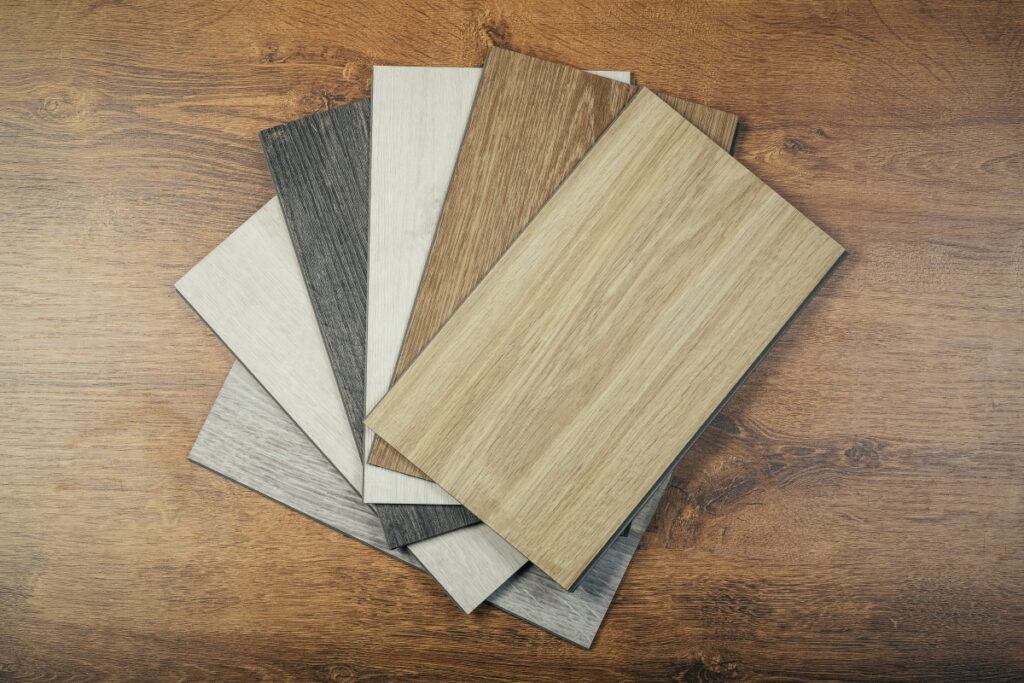
What is LVP?
LVP is a type of resilient flooring known for its durability and realistic wood-like appearance. Unlike Luxury Vinyl Tile (LVT), which mimics the look of stone or ceramic tiles, LVPs are meant to replicate the appearance of hardwood.
LVPs typically consist of the following layers:
- Backing Layer: This layer forms the base of an LVP and is usually made from foam or cork. It provides the plank with structural support and stability, while also acting as a barrier between the subfloor and the rest of the plank. It gives the plank its flexibility, which contributes to its long-lasting durability and comfort underfoot.
- Core Layer: The core layer sits directly on top of the backing layer and is typically made from polyvinyl chloride (PVC) or high-density fiberboard (HDF). This layer ensures the plank maintains its shape and structure and provides resistance to denting, temperature fluctuations, and humidity.
- Design Layer: This layer features a high-definition image that gives the plank its appearance. It is also often embossed with the texture of the surface it is trying to mimic to give it a more natural feel.
- Wear Layer: This is the topmost layer of the LVP and is made of urethane. It helps protect the LVP against scratches, stains, and wearing.
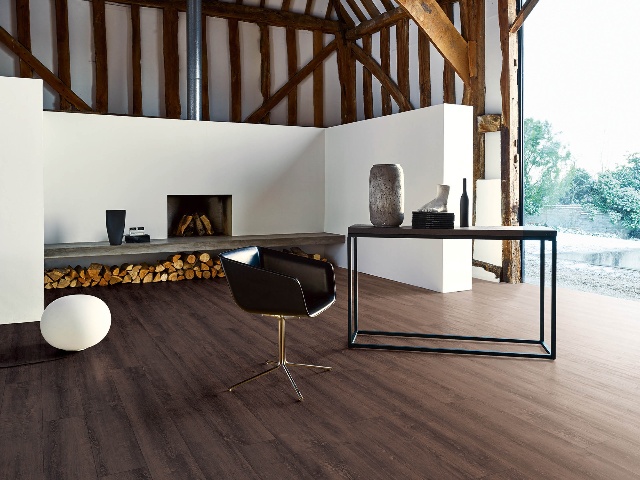
LVP vs. SPC vs. WPC
Looking at flooring options can often make a person feel like they are trapped in a world of alphabet soup. LVP? SPC? WPC? PVC? What do they all mean and how are they different from one another? The major difference between the three is what their core layer is made from. LVPs’ core layer is typically made up entirely of polyvinyl chloride, or PVC. This differs from the cores of Stone Plastic Composites (SPC) and Wood Plastic Composites (WPC), which are mostly made from a limestone powder or wood fibers and are bonded together using PVC. Each is waterproof, durable, and easy to install and maintain. However, the differences in their core layer compositions give them each unique characteristics. SPC is the thickest and most rigid of these flooring options. WPC is the softest, but thicker than LVP. LVP is the thinnest, but falls in between the other options in terms of rigidity. These differences in the core material can make each a perfect fit depending on the room they are being used in and your preferences.
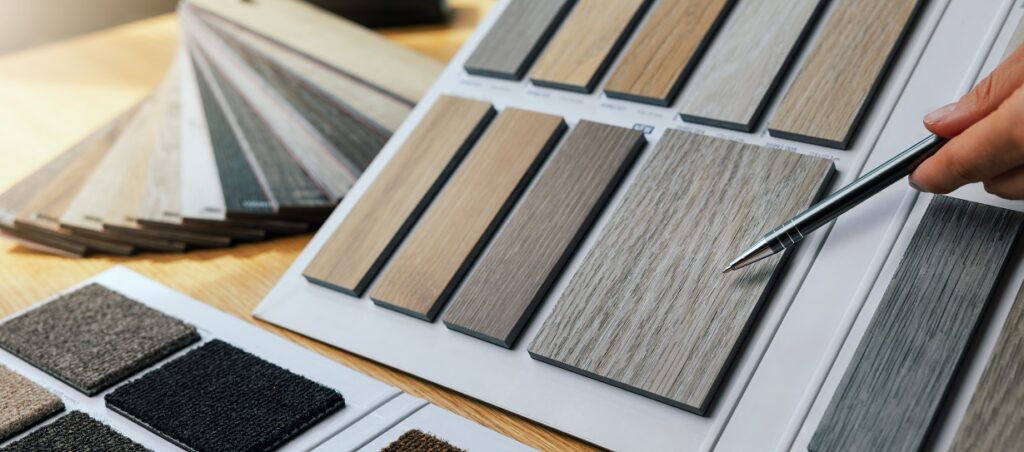
Pros and Cons of LVP
LVP flooring offers several advantages over other flooring types, including its durability, versatility, affordability, and easy installation. In the section, we will elaborate on these advantages, while also discussing the disadvantages of choosing an LVP floor.
Pros: LVP is Easy to Clean
One of the greatest advantages of LVP flooring is that it is remarkably easy to clean. The waterproof wear layer prevents moisture from penetrating the surface of the planks and protects it from staining. The planks’ smooth surface makes it easy to sweep or wipe up any grime because those elements will not get caught in the nooks or crannies of a texturized surface.
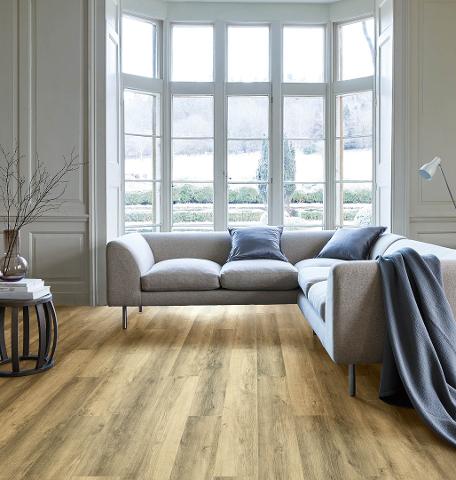
Pros: LVP is Cheap
LVP’s affordability is another significant advantage because it provides home and business owners with a cost-effective flooring option when compared to high-end flooring options, such as hardwood or stone. LVPs can mimic the look of stone or hardwood floors at a fraction of the cost. Choosing an LVP floor not only saves money in terms of material, but also extends to the cost of installation. These floors come in a variety of user-friendly installation methods that make them perfect for any DIY project. They also significantly reduce labor costs if you choose to pay a professional. When choosing a vinyl floor, you will be able to choose a click and lock system, peel-and-stick, loose lay, or glue-down installation method. Additionally, despite the lower price point, you do not have to compromise on the durability or design, which we will discuss later.
Pros: LVP is Easy to Maintain and Repair
The simplicity of maintaining and repairing LVP flooring offers buyers another huge advantage. An LVP floor only requires regular sweeping and occasional mopping with mild cleaners to maintain its appearance, which can save valuable time and money. LVPs’ resistance to staining and water damage makes cleaning up spills easy and quick, while also preventing permanent damage. In instances where the floor is damaged, it is easy to repair compared to many other floors because individual planks can be replaced. This can save significant time and hassle when compared to floors that will need to be fully reinstalled. The easy maintenance and repair of LVPs gives stakeholders an attractive choice when seeking a visually appealing, low-maintenance flooring option that stands the test of time.
Pros: LVP is Durable
An LVP floor has exceptional durability, which offers another substantial advantage. The floor’s various layers work together to give it exceptional longevity that is capable of enduring heavy foot traffic and everyday wear. This resilience makes it a reliable choice for high-traffic areas in homes or commercial spaces. The wear layer helps protect the design from scratches, dents, and stains making it an ideal solution for households with pets, children, or areas prone to spills. This durability contributes to long-term cost savings, as it allows for easy cleaning and maintenance but gives it the necessary versatility to be used in various areas of the home. Overall, LVP is a great choice for those looking for a long-lasting flooring solution.
Pros: LVP is Waterproof
While one can often tell the difference between a hardwood and an LVP floor, there is one important advantage LVP has over wood: It is 100% waterproof. This makes it a much better, more reliable choice for areas prone to spills or high humidity, such as kitchens, bathrooms, or basements. In such areas, hardwood floors are prone to potential issues like warping, swelling, or the growth of mold or mildew. An LVP flooring on the other hand will maintain its integrity even in the dampest of environments. This also simplifies cleanup procedures as spills or accidents can be swiftly and easily wiped away without the concern of water seeping into the flooring and causing long-term damage. Homeowners can sleep easily knowing their LVP flooring will help protect their home from long-lasting damage.
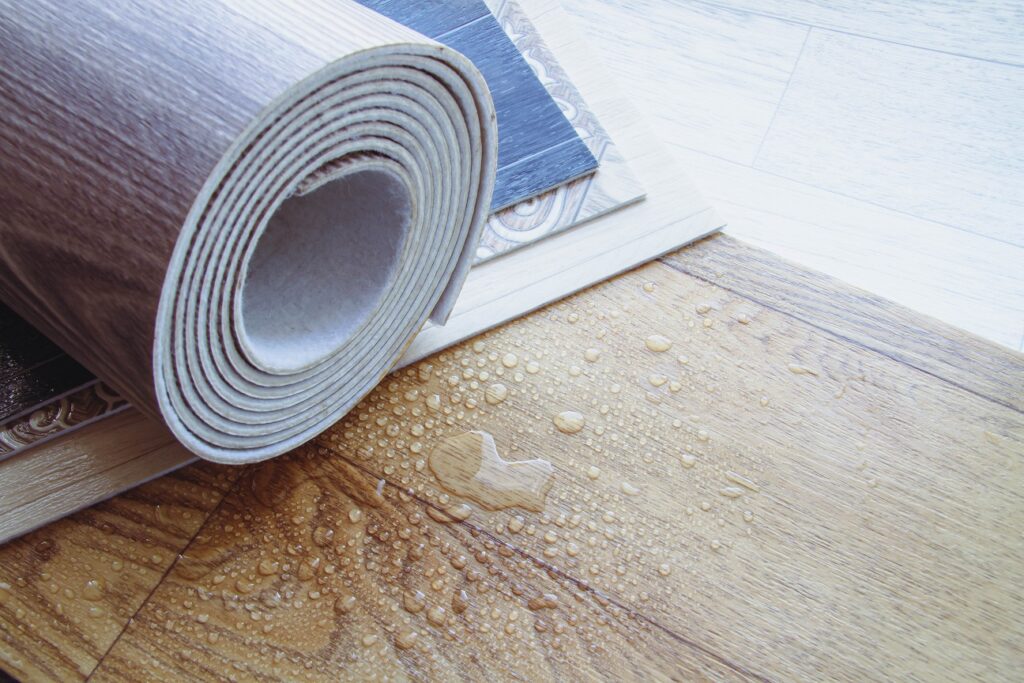
Pros: LVP is Comfortable to Walk On
An LVP floor offers inherent softness and slight resilience. This results in a more cushioned walking experience compared to harder surfaces like tile or hardwood. It can also help alleviate stress on joints and feet – an added benefit in areas of the home or a business where standing or walking is frequent. Additionally, LVP helps maintain a comfortable temperature in a room due to its ability to retain heat. The composition of LVP that gives it its softness also gives it the ability to absorb sound, reducing noise in a multi-story home and high-traffic areas. The comfort provided by a LVP floor can often be tailored to fit your needs, as you will find an LVP floor comes with cushioned layers of various thickness. Altogether, LVP flooring helps create a more inviting and comfortable environment for daily living activities.
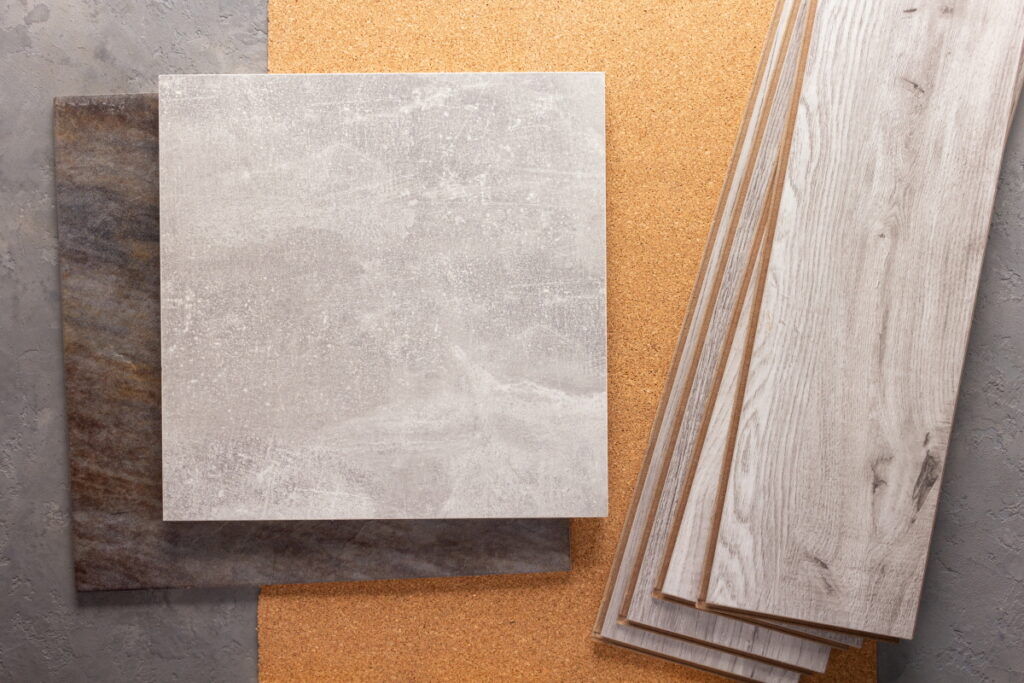
Cons: When Installing LVP, It Smells
Perhaps the most concerning drawback of LVP flooring is the odor it emits during installation, which comes from the volatile organic compounds (VOCs) within the floor. This process is known as off-gassing and happens with many new products, such as paint. In extreme cases, this process can cause temporary discomfort, such as headaches or respiratory irritation. To help mitigate the effects, try to create as much air flow in the space as possible to allow the smell to dissipate. Such smells also raise concerns about how eco-friendly this flooring option is. But these can be addressed by opting for a low-VOC or phthalate-free LVP floor.
Cons: LVP May Fade in Direct Sunlight
Prolonged exposure to the sun can lead to the colors and patterns of LVP fading over time and impacting the benefits of the floor for many homeowners. Such fading can be even more pronounced due to the unevenness in which discoloration often occurs because it causes patches or areas of differing shades and disrupts the cohesive look of the space. This inconsistency in appearance detracts from the overall visual appeal of the flooring and limits where it can be installed in the home. Furthermore, fixing faded portions of a floor often means replacing those areas, which adds to its overall cost over the long-term. If you choose an LVP floor, you should explore preventive measures to avoid fading, such as using window treatments to reduce sunlight exposure or choosing LVP products with UV-resistant coatings.
Cons: LVP Can be Difficult to Remove
Depending on the type of installation method your LVP floor uses, it could be very difficult to remove. LVP floors that use a peel-and-stick or a glue-down method during installation can be difficult to remove due to the strong adhesives they use to attach the vinyl flooring to the subfloor. These adhesives can cause removal to be a labor-intensive process and a time-consuming effort. In some situations, these types of LVP installations can cause damage to the subfloor that must be fixed before installing the new floor, thus making them more costly. An LVP floor can also be difficult to dispose of once removed because they contain products that are hard to recycle. To mitigate these challenges, you should opt for a floating LVP option like those that use a click-and-lock system. This option does not require an adhesive and makes removal relatively easy.
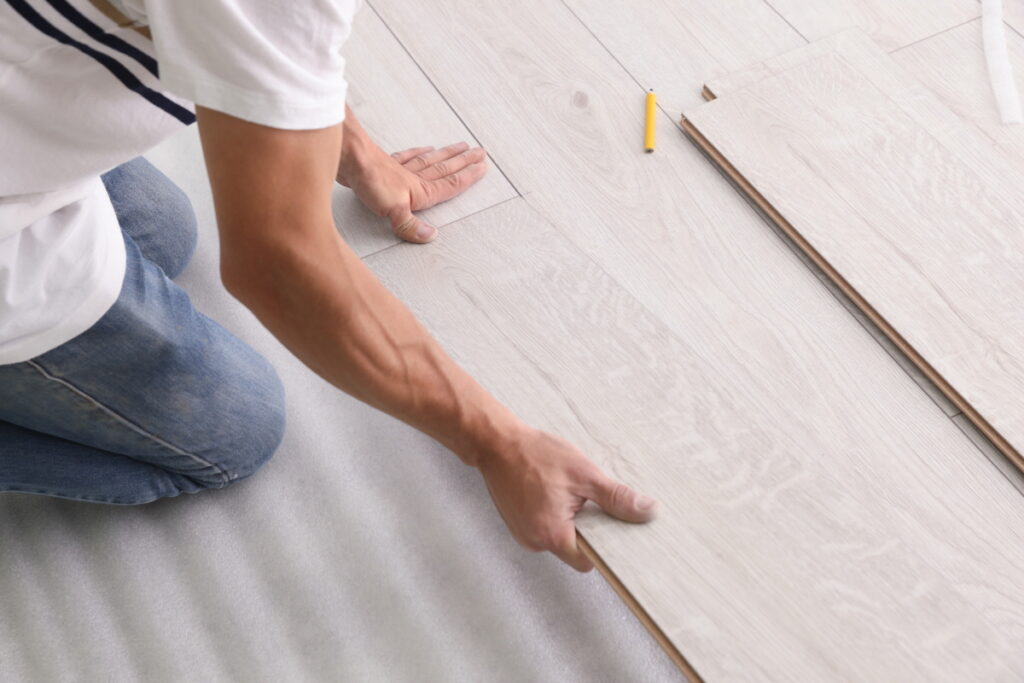
Cons: LVP Quality is Inconsistent
Inconsistent quality across LVP products presents several disadvantages for consumers because it directly impacts the durability and lifespan of the floor. Lower-quality LVP flooring options can show signs of premature wear, damage, or fading sooner than higher-quality ones, and it is often hard to know which you are buying. Furthermore, erratic quality affects the appearance of the flooring due to inconsistencies in color, texture, or pattern accuracy between planks within the same batch. This can lead to an unsatisfactory final aesthetic. Lower quality LVP products can also impact the installation process because the product may be of varying thickness, not fit together, or damage easily. To avoid this issue, be sure to research reputable brands, inspect samples thoroughly, and seek detailed product information prior to purchasing.
Cons: LVP Cannot be Refinished
Unlike traditional hardwood floors that can be sanded and refinished to extend their lifespan, LVP lacks a restorative option. Over time, a LVP’s surface can deteriorate and wear down, eventually impacting its appearance. Once this happens, the only option to restore your floor is to replace it, which can be costly. This leads to a shorter lifespan than flooring options that can be refinished. The replacement aspect is also an environmental concern, as LVP products are not easily recycled and will most often end up in landfills. To ensure your floor lasts as long as possible, choose a vinyl flooring product with a thick wear layer.
Contact us
Looking to elevate your space with exquisite Luxury Vinyl Plank (LVP) flooring? Take the leap with LX Hausys, the epitome of quality and elegance in flooring solutions! Contact us using the form on our website and one of our experienced flooring experts will get back to you to answer any questions you may have.

